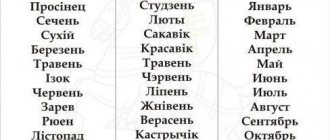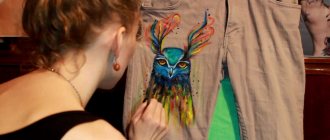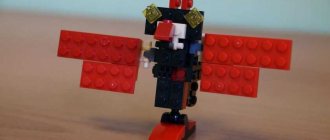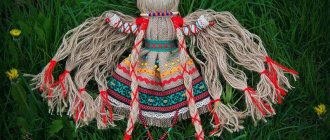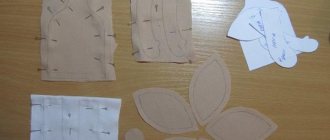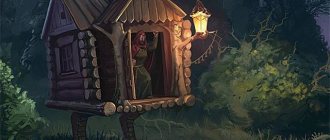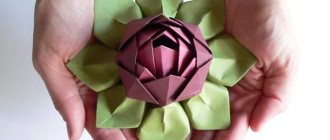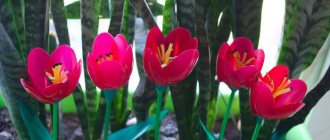The history of most folk talismans and amulets goes back to ancient times. However, one of the most popular amulets in the world became widespread not so long ago. The tradition of hanging a talisman such as a horse's shoe over the front door goes back several hundred years, and you can make a talisman with your own hands. Moreover, it is not at all necessary to be a blacksmith for this.
Why is the devil afraid of the blacksmith?
In the folklore of many countries there are tales about the confrontation between the blacksmith and the devil. When Nikolai Vasilyevich Gogol wrote about the adventures of the blacksmith Vakula, he drew inspiration from folk tales. But where did these stories come from? Having found the answer to this question, you can also find out why people decorate their houses with a horseshoe. Moreover, this tradition exists not only in Slavic lands.
The history of the symbol began in the tenth century. One day the Devil himself appeared to the blacksmith Dunstan. Having heard about Dunstan's skill, the horned client ordered the blacksmith to shoe him.
The cunning blacksmith pretended to be scared and willingly agreed. However, he told the devil that he needed to be chained to the wall so that he would not twitch due to tickling, otherwise his new “shoes” would sit crookedly. The stupid horned one agreed and obediently allowed himself to be chained by the blacksmith. Then the blacksmith heated a horseshoe and applied it to his paw. The devil howled in pain, but could not escape - the blacksmith chained him to his conscience.
Neither the threats nor the entreaties of the evil one had any result. Until, finally, he gave the blacksmith his word that from now on, no hoof or paw of any of the hellish creatures would cross the threshold of the dwelling, over the entrance to which a horseshoe amulet would hang.
The unclean one kept his word. The cunning blacksmith also benefited from the deal. It is not known for certain whether he gave the amulets to neighbors as gifts or perhaps sold them. However, very soon he somehow, from a simple blacksmith, became the Archbishop of Canterbury, and after his death he was even canonized. And this is no longer a legend, but a historical fact.
How to hang a horseshoe correctly
The effect of the amulet depends on its placement. There is endless debate on this issue. Perhaps due to the fact that beliefs differ in different countries, and the knowledge of different peoples has penetrated into our culture.
- In Europe. The ends point down. The amulet is hung on the outside of the house. It is believed that happiness will pour on heads.
- In the East, in England, in Ireland. The horseshoe was pointed upward with its horns so that well-being would not flow out, but accumulate. It was customary to place it indoors.
- Mexico. There are no exact directions for the direction, but in this country it is not customary to touch the talisman.
- Russia. Both placement methods are applicable. The meaning depends on this.
Horseshoe ends down
In this form, it is nailed outside the home. This is protection from witchcraft, evil spirits and evil people, the evil eye. A horseshoe nailed to an unusual place attracts attention and surprises an envious person or ill-wisher passing by. Surprise will prevent him from casting the evil eye and harming the house.
It is also believed that this way the tips will prick the evil eye. A person will not be able to even look at the house.
Be sure to place it strictly above the door, since all evil enters the house through it. The amulet will keep all the negativity outside.
Horseshoe up
She is nailed inside the home. So the house will become a full cup. We must make sure that there is no tilt, otherwise happiness will spill out.
A horseshoe nailed in this way accumulates and preserves happiness, love, luck within the family, and will not let them out of the house. Traditionally placed above the door. You can find options: above the fireplace, above the bed, in the red corner. There are no such references in official sources. These are modern interpretations.
The head of the family nails down the horseshoe. Only one nail is used for this. The amulet should neither fall nor tilt. It is believed that if a man can firmly nail a horseshoe, then he will be able to run the household well.
These rules apply to both real horseshoes and amulets made with your own hands.
Rules for creating a talisman
In order for a homemade horseshoe to have magical powers, you must adhere to the rules. Otherwise it will just be a craft.
- They don’t make a talisman for themselves. Gifts have great power. Therefore, you can happily give a horseshoe to your loved ones and accept it as a gift.
- Intentions must be good.
- Each part of the amulet has meaning, so make an individual amulet, providing it only with the necessary elements.
- While making it, think about the person, imagine his image.
- During such work there are no distractions.
- People who are ill are not allowed to work if they are in a bad mood.
Good amulets come from good people. Especially when they are made for loved ones. Make a horseshoe only for someone who will appreciate this gift and who will benefit from it.
Spread of tradition and amulet
Because of this legend, it is believed that the tradition of protecting a home with a horse talisman originated in England. Horseshoes themselves were invented by Celtic or, according to another version, Gallic masters, around the fifth century AD. And only during the reign of Peter the Great the tradition spread in Russian lands. The first European horse riding school was founded in 1732 in the village of Khoroshevo near Moscow. So the horse talisman over the doors of the Slavs first appeared only a little over three hundred years ago.
Why is it customary to endow a horseshoe with special powers?
For a long time in peasant farming, the horse greatly facilitated work and was considered a symbol of wealth and prosperity. In addition, the horseshoe constantly touches the ground, drawing special strength from it.
- The open circle is considered a trap from which not a single representative of the dark forces can escape.
- The metal from which horseshoes were forged has protective powers against evil.
- The original shape of the horseshoe also has a sacred meaning: when turned upside down, it looks like a bowl, which has long been a symbol of abundance.
- In addition, the shape of the horseshoe resembles a pitchfork without a central point, which also indicates a rich harvest.
- The most durable, from an energetic point of view, was considered to be a worn and rusty horseshoe found on the ground. He had enough contact with the ground and the horse, he received the necessary energy from them. It was believed that rust could deter diseases and keep them away from the home.
An ancient legend tells of the devil in the form of a horse, who once appeared to a blacksmith in order to mislead him and thus take possession of his soul. The wise blacksmith recognized the leader of the evil spirits and put him into circulation so that the devil would pray for mercy. The blacksmith gave him his freedom in exchange for a promise never to enter a house where a horseshoe hung over the door.
Since then, the horseshoe began to protect the house from the forces of evil. The ancient Slavs carried small horseshoe pendants with them as talismans for good luck.
Traditions of making a talisman and its features
A horse amulet accidentally found on the road is considered a particularly auspicious symbol. Apparently the reason is its rarity. Today it is easier to find a wallet or mobile phone dropped by someone than a real horse's shoe.
However, buying horse talismans is not difficult. They are readily sold by blacksmiths who forge amulets directly for sale, following tradition. There are many souvenir shops and amulets stamped on assembly lines by Chinese craftsmen - the symbol is also popular in the East. However, the most practical needlewomen can make a horseshoe amulet at home, from materials at hand.
There are no special requirements for the materials or the size of the amulet. All souvenirs are considered equally effective. However, real craftswomen, experts in folk crafts, recommend following tradition when making your own talisman.
Symbolism is of considerable importance in the Slavic tradition. Therefore, craftswomen decorate home talismans with special details and materials.
- The red pepper pods on the product are a symbol of hot passion. They are appropriate for a talisman that is presented as a gift to newlyweds or a spouse.
- Wheat or rye ears, corn kernels and cobs, pumpkin seeds on the amulet are symbols of fertility. An amulet decorated with these symbols can be given as a wedding gift or hung in your own home.
- Chamomile on a souvenir is traditionally considered a symbol of marital fidelity.
- In order for the talisman to bring prosperity, it is decorated with beans, bags of grain, and coins. This is a wonderful gift for new residents.
- A small broom on the talisman will bring money if it is attached upside down. And if the broom is attached with the handle up, the gift will protect the family from quarrels.
- Souvenir decorations such as a sunflower and bread, as well as a pair of miniature bast shoes made of any material, also contribute to peace in the family.
- Bay leaves traditionally promise glory. Garlic and onions also contribute to it.
- Rose hips and rowan tassels are symbols of unfading beauty.
- Fir and pine cones are a symbol of longevity or, according to another version, a symbol of hard work.
- If you decorate a horseshoe with a poppy box, it will help your cherished dream come true.
- A red ribbon on a souvenir brings good luck.
- Field herbs on the product are a symbol of health.
- Half a walnut is a symbol of the intelligence of the owner of the talisman. A horseshoe amulet with such decoration will be a good gift for a student or for children attending school.
However, it should be noted that a do-it-yourself horseshoe amulet is effective if the souvenir is made as a gift and not for yourself. Some sources even claim that a hand-made product is unsuitable for use. If the craftswoman wants to make a souvenir that is ideally suited to the needs of her family, she can give the product to her husband, children, or parents. Thus, the man-made symbol of happiness will remain in the house.
Recommendations for making a talisman
In order to get a talisman, and not a craft, you need to follow the following recommendations:
- A horseshoe should not be made for oneself, but as a gift.
- Thoughts and intentions should be directed towards good.
- Any element of the talisman carries its own meaning. As a result, when making it, limit yourself to only the necessary details.
- During the creation process, your thoughts should be occupied by the person to whom you are giving the gift.
- You cannot be distracted from work.
- You can’t start this kind of work in a bad mood.
Choosing material for a souvenir
As already mentioned, there are no special requirements for the material from which the souvenir will be made. The craftswoman does not have to use exclusively natural materials for the product - it is quite acceptable to make jewelry from plastic or polymer clay. The base of the product can be made of plywood, but cardboard will also work. The crafter can use materials she already has at home, or buy everything she might need in advance from a craft store.
However, according to tradition, souvenirs have the greatest power; the craftswoman approaches the selection of materials for them not only from an aesthetic point of view, but also from an energetic one. To do this, you need to apply a simple ritual.
Before making a horseshoe with her own hands, the craftswoman needs to take a round mirror and light a candle. While it is burning, you need to circle it clockwise around the edge of the mirror several times. At this time, the craftswoman should think about the person to whom the future product is intended as a gift. Then the mirror is placed with the reflective surface up, and on top of it, in turn, is each of the materials with which the craftswoman wants to decorate the gift.
Closing her eyes, the craftswoman needs to put her hand on the symbol and listen to her own feelings. A feeling of warmth will tell the craftswoman that the choice of material has been made correctly. Cold fingers are a sign that the material for the souvenir is not suitable.
Excursion into history
In the times of Ancient Rus', the protective function of a horseshoe was explained by the view of ancestors on horses - the main breadwinners of the family. The horse was a symbol of wealth - poor people could not afford to buy it.
Everything matters:
- Form. If you place the horseshoe with its horns up, you will get a bowl; if you place it down, you will get a pitchfork without a central tine.
- Material. Since ancient times, iron has been used to ward off evil spirits.
Since ancient times, it was believed that a rusty, worn horseshoe found in road dust had the most powerful protective properties, since rust attracts illnesses and illnesses, preventing them from clinging to a person.
Therefore, it is not surprising that the Slavs hung a horseshoe over the entrance as a talisman against evil and even made small pendants to wear as individual amulets.
Modern experts are convinced that the optimal solution is to purchase a talisman made of gold or silver. It will bring good luck and happiness to the owner. Although the iron version is not bad.
A simple home amulet - horseshoe
Here is the simplest and most universal master class on making a horseshoe amulet.
- To begin with, the needlewoman needs to make the base of the horseshoe. The template below should be printed at the desired size. You need to outline it and cut out a frame from a sheet of cardboard. If the material is thin or soft, you should make several cardboard horseshoes and glue them together.
- The finished horseshoe base is covered with fabric. You can use burlap, linen and even bright synthetics. A base wrapped with ribbon or twine also looks good. A great option is to crochet the frame of the souvenir.
- The selected decorations should be attached to the prepared base. They need to be sewn or glued with a glue gun.
- If you plan to hang the souvenir on the wall, you need to attach a loop to the back of the amulet.
Materials you can use
Today, it is possible to make horseshoes from a variety of materials. Everything is limited by imagination, experience and finances. Modern needlewomen make crafts from threads, salt dough, coffee beans, sweets, wood, clay, metal, and glass.
It is customary to supplement the amulet with semantic symbols:
- A small bag of cereal - welfare
- Hot pepper - love.
- Pumpkin seeds – fertility.
- Bread – comfort and home warmth.
- Coins mean good luck in business.
- Medicinal herbs – health.
- Garlic cloves – against evil spirits.
There are others too. There are many symbols, and which one to choose depends on what you want to have as a final result. But try not to overdo it. The abundance of symbolism does not look aesthetically pleasing.
The finished horseshoe can be placed in a beautiful gift box. This will make it more pleasant for the recipient to receive it.
A horseshoe for luck is not a superstition. It really brings it, especially if it is done by hand. How could it be otherwise, because a thing made with one’s own hands carries within it a special energy and a piece of the soul of its creator. Therefore, if you want to bring positivity into your life, then ask your loved ones to make this amulet for you.
Fragrant talismans
To not only decorate the interior, but also fill the room with a pleasant aroma, you can decorate the base of the amulet with coffee beans. The craftswoman should take roasted and green grains for horseshoeing. They are attached to the fabric base of the product using glue. You need to start with the outline of the horseshoe.
You can also use fragrant herbs: mint, lemon balm. A small amount should be placed in a bag, which must be attached to the base of the horseshoe. As the smell fades, it is renewed with a drop of aroma oil, which is applied to the bag. Such a fragrant horseshoe can be hung not only in the apartment, but also in the car - a homemade elegant fragrance for the interior will be an excellent gift.
Materials for making a horseshoe
The most effective traditionally are horseshoe amulets made of metal, gold and silver.
However, homemade amulets made from other materials have mystical significance. The souvenir can be made from scrap materials.
The product can be integrated with other magical symbols:
- garlic traditionally protects the home from evil spirits,
- coins bring good luck,
- chili pepper symbolizes masculine strength,
- corn on the cob brings health to children,
- the bump symbolizes hard work,
- walnuts symbolize intelligence,
- wild herbs bring health.
- seeds or his image bring happiness to the family,
- the image of bread is associated with home comfort,
- bay leaf can attract good luck,
- poppy helps to realize your plans,
- linen bags filled with cereals are designed to improve well-being,
Having previously thought through the general concept, you can supplement your homemade horseshoe-shaped amulet with some of these symbols. At the same time, it is important to know when to stop and not to overload the souvenir with additional elements.
Edible souvenir as a gift for children
It will take no more than a quarter of an hour to make the product, provided that you managed to buy chocolate medals and a sheet of foil in advance. Therefore, a souvenir is a real find for those who urgently need to make an original, inexpensive gift for children.
The cardboard base is wrapped in foil. Use double-sided tape or a glue gun to attach chocolate medals or any other candies to the gift. The finished product looks expensive and elegant, but such a gift costs a penny.
Gift composition “Horseshoe” with sweets
Always, when we are invited to some kind of celebration, we rack our brains about what to give, what gift to choose so that it is original, beautiful, and unusual. You won’t surprise anyone with a bouquet of flowers and a bottle of champagne, but making some kind of composition in which you can combine sweets, flowers, and a bottle of your favorite drink will be both original and very unusual. Today’s master class will help us cope with this task more than ever.
So, what do we take to create such a creation:
- Several sheets of thick cardboard from under any unnecessary boxes;
- Crepe paper in burgundy, dark green and metallic gold;
- PVA glue;
- Ordinary cardboard, maybe half a landscape sheet;
- White regular cardboard A4;
- Double-sided tape;
- Regular tape;
- Green packaging foil;
- Transparent packaging;
- Gold bow and narrow gold ribbon;
- Glue gun, stapler, scissors, pencil;
- Gold narrow brocade ribbon, width 0.7-0.8 cm;
- Narrow pink satin ribbon;
- Chocolate bar; a bottle of champagne, nine Golden Lily chocolates; about 30 different candies and bars.
To begin, draw a horseshoe symbol on a piece of cardboard so that nine Golden Lily candies can fit on it.
We cut out a horseshoe and attach it to thick cardboard from under the boxes.
Cut out four dense horseshoes. We glue them together with PVA glue. This way we get one thick horseshoe.
Now coat the entire edge of the horseshoe well with PVA glue and glue a gold brocade ribbon. We cut out two horseshoe blanks from gold crepe paper.
Glue them onto a cardboard blank. From a sheet of ordinary white cardboard, cut out two rectangles 7.8 cm wide along the entire length.
We glue them together, and then we form a circle and glue it together. The circle is about 9 cm in diameter.
From green crepe paper we cut out a rim for our circle.
We glue the paper onto double-sided tape, as in the photo. From burgundy paper we cut out two rectangles, the length of which corresponds to the circumference of the circle.
We bend a narrow rectangle and glue it on top, then glue a larger rectangle and stretch the top, forming a flower.
We tie the junction of burgundy and green paper with a satin ribbon.
Use a glue gun to glue the “Golden Lily” onto the horseshoe.
We glue the entire horseshoe to our stand with a glue gun. Separately, wrap a sheet of simple thick cardboard about 20*25 cm in green foil.
We place our stand on cardboard. We insert a bottle of champagne into the stand.
Add chocolate, candy bars and candies, pack everything in transparent film, tie it nicely and glue a bow at the top. The gift composition is ready! Have a nice mood everyone!
Salt dough amulet
Horseshoes made from hard salted dough are very popular today. Making such a talisman is very simple.
- The dough must be kneaded from flour, water and salt, and the salt should be strong - a tablespoon of salt per cup of flour.
- The dough is rolled out into a sheet about a centimeter thick, a horseshoe is cut out according to the template - this is the basis of the product.
- The base should be dried in the oven at moderate temperature.
- Using an awl, holes should be made in the dried base for fastening.
- Decorate the horseshoe with decor from the leftover dough.
- The product is baked until golden brown and the horseshoe is allowed to cool.
- The horseshoe is first coated with two layers of primer, then varnish, and allowed to dry.
- Acrylic should be used to paint the amulet.
Examples of making a horseshoe with your own hands
Here are the most popular master classes. Choose depending on your taste, materials at hand and skills.
Horseshoe made of threads master class
Horseshoe made of threads
For such a product take:
- Circuit. You can take corrugated cardboard, plywood, polystyrene foam, wood.
- Threads. Natural ones are preferable. For example, hemp, twine, thick wool yarn.
- Jewelry to taste.
Stages of work:
- Cut out the base. For this, a pre-printed pattern is used. Carefully consider the choice of material. Corrugated cardboard is available, but can break under the weight of the threads. You won't be able to tighten the threads tightly. Plywood holds threads well and is easy to use, but to cut out the outline you will need a tool, skills to work with it, and you will have to strain all your strength, and the edge will end up with jagged edges that will have to be sanded off, which will create a lot of debris. It is difficult to cut out a neat outline from polystyrene foam. Such material will break and crumble. Hardboard is good for crafts, but it is not sold in small pieces. Each material has its own characteristics, so take them into account when choosing. The most affordable is cardboard. For it you need to choose thinner threads or glue two sheets together for strength.
- We wind the threads around the base. The thinner and softer the warp, the thinner and softer the thread should be. Cotton or wool is used for cardboard. On the outer part of the horseshoe, the yarn will come apart, so you need to make several turns. You can tie the frame using a hook. This edge will look neater.
- The work can be considered completed. Decorations are attached using universal glue.
- Holes are made at the tips of the horns, and a braid is threaded through. This decoration should hang inside the house, so we point it with the point up.
Horseshoe for luck made from salt dough master class
Horseshoe for luck made from salt dough
Necessary materials:
- 50 gr. salt, 70 gr. Water, 100 gr. flour 1.5 tsp PVA glue for dough.
- Paints.
- Varnish.
- Tassels.
Manufacturing process:
- Knead the elastic dough by hand. We have given the approximate weight of the components. Flour can be different, focus on the consistency of the dough. It should resemble soft plasticine. Don't use coarse salt. Such a base will not give the dough elasticity.
- The base is being made. It can be cut with a knife according to a pattern or with a mold. At the ends, holes are made for the tape using a match. If relief is needed, it is created now. Dry the workpiece in the oven until half cooked at a temperature of 50 degrees.
- Decorations are molded and attached to the dough. You can draw veins on the leaves and flowers or use a special mold for sculpting, where the texture has already been drawn. The workpiece is baked until fully cooked.
- Gouache is applied to the horseshoe. The parts can be molded and baked separately to make painting easier. After the gouache has dried, the elements are collected using PVA glue. It is preferable to use acrylic paints. You should not use acrylic for glass. It is bright, with a glossy shine, but remains sticky on the dough for a long time.
- The workpiece is varnished. This is the last stage. For this, acrylic varnish is used. If you don’t have it and use nail polish, it’s better to do a compatibility test in advance. AK and varnish have different bases. Material conflict may occur. As a result, either the surface will end up with blisters and stains, or it will remain sticky.
The dough can be replaced with polymer clay. It's already colored, so you don't have to paint it. There are types that glow in the dark, translucent or shiny. Products made from this material are similar to factory ones. The plastic molds well and does not break when hardened. From polymer clay you can make a horseshoe in the form of a brooch, earrings, or refrigerator magnet.
Horseshoe for luck made from coffee beans
Horseshoe made of coffee beans
This product looks modern and elegant, and the aroma of coffee invigorates and creates comfort. You can make a horseshoe as a wall panel or a refrigerator magnet.
Materials:
- Corrugated cardboard.
- Fabric for the frame.
- Glue.
- Scissors.
- Coffee beans.
- Decor.
- Magnet.
Let's get started:
- Two horseshoes are cut out of cardboard according to the pattern and glued together.
- The frame is covered with fabric.
- The front side is sealed with coffee beans so that there are no voids.
- Magnets are glued to the back. If a panel is being made, then holes are made in the horns for the tape. The product will be heavy, it is better to take 2-3 large magnets.
- Horseshoe decoration. These can be ribbon bows, beads, cinnamon sticks or flowers, dried orange slices. Do not weigh down the craft with bells, bags and similar items.
Instead of coffee beans, you can use seeds, cereals, or a combination of both. Depends on the imagination and the meaning put into the object.
What to do if you are lucky enough to find a horseshoe talisman
The lucky ones who managed to take possession of a used horse shoe can improve its appearance before decorating the house with a talisman.
- Using a rust converter, traces of corrosion are removed from the product.
- The surface of a horse's shoe is sanded with a file and sandpaper.
- You can order amalgam coating from a jewelry workshop, but this is an expensive service.
- The amulet is opened with varnish in two or three layers and allowed to dry.
- Decor can be added as desired. Usually, according to tradition, a horse amulet is decorated with a bell.
A find processed in this way can be kept for yourself or given to a loved one. Such a gift given for housewarming is especially appreciated.
Horseshoe made of coffee beans
Preparing material and tools
- large evenly roasted coffee beans;
- packaging cardboard;
- universal glue or hot glue gun;
- fabric and scissors;
- material for decoration (beads, rhinestones, ribbons, bells, etc.).
Step-by-step instruction
- We prepare templates 12 x 13 cm.
- We cut out two horseshoes from corrugated cardboard and glue them together.
- We cover it with a nylon stocking.
- First we will paste the grains around the outline.
- Carefully fill the entire surface with grains.
- We decorate with a bow of colored ribbons, decorated with a bead.
- We glue magnets on the back side.
- If the magnets are reliable, you can add bells to the horseshoe.
Material for making decor
All the decorations that were written about earlier can be purchased ready-made, or made with your own hands if you have the desire and capabilities. For example, in order to make strawberries or sea buckthorn, you can use regular dough with a large addition of salt. People call this type of dough salty. How to prepare this dough? It is necessary to take equal quantities of salt and first class flour. Then add warm water little by little to the mixture, stirring thoroughly. As a result, you should get a fairly elastic material, reminiscent in consistency of dough for dumplings or dumplings.
Form the necessary parts from the dough, then dry them. To do this, use an oven preheated to 50 degrees or simply hang the dough outside, of course, if the weather is not raining. Once the material has completely dried and become hard, you can begin painting the dough. To do this, you can use ordinary paints, for example, borrowed from your child. It is important, after applying the color, to fix the result with regular nail polish. It will protect the color and also add shine.
If we are talking about how professionals work with horseshoes in master classes, of course, salt dough is not used here. They work with more durable materials such as:
- porcelain
- polymer clay
- plastic
How to activate the amulet
In ancient times, a horseshoe that was accidentally found on the road or in a field was considered a treasure. But modern realities change everything. Even a souvenir horseshoe bought in a store can be considered a talisman. But buy only the one you like the most.
Before hanging the amulet on the wall of the house or above the door, perform a ritual that has been performed since ancient times. It's very simple. Each family member should hold a horseshoe in their hands so that good luck goes to everyone living in the house.
Even a horseshoe purchased at a souvenir shop has magical powers.
There are several more ways to activate the horseshoe amulet for good luck:
- buy 5 thin church candles, place them so that a circle is formed, inside which there should be a horseshoe, light the candles clockwise and say the spell three times: “Horseshoe for luck, give me (name) happiness”; You can hang a charmed amulet only after the candles have burned out;
- on a full moon, in clear weather, place the horseshoe on the windowsill so that the horns point towards the street, moonlight should fall on the amulet; In the morning, the charged amulet is ready to take its place.
On a full moon, you can charge a horseshoe amulet so that it brings happiness
How to choose material?
As already mentioned, the material depends on the person for whom the amulet is intended. To understand what is suitable in this case, it is necessary to imagine the person visually, remember the sensations that arise when communicating with him, and make associations.
This way, you will get an idea in your head about which material is “his.” This choice will be based on feelings, but most likely it will be correct, because close people are first of all felt, and not formed a rational opinion about them.
Usually a fabric is used that is filled with something. The content may have some meaning, for example:
- beans - prosperity
- red pepper - love
- nuts - mind
- herbs - health
- seeds - family happiness
- poppy - wish fulfillment
- coins - success
This list of possible materials is not limited; only the most popular ones are listed here. They can not only fill the amulet, but also decorate it.
You can also make a horseshoe not from fabric, but from plywood, wood and any other available materials that can hold the appropriate shape.
Bakery
You can make a horseshoe from puff pastry. It will not be eaten like other baked goods, but it will be created in the same way. You will need special puff pastry and an appropriate mold.
Then the finished product can be colored or decorative elements from the same dough can be added to it.
So, making a horseshoe amulet with your own hands is quite simple, you just need to have some perseverance and have the necessary materials on hand. Such a gift will delight loved ones, as it simultaneously shows care and wishes for good and is a nice decoration for the home, reminiscent of the giver.
Source
